Average sizes and life expectancy for this breed:
The British Shorthair is known to be one of the oldest cat breeds on the planet. They are adored for their easy-going demeanours and adorable, chubby faces. This cat breed is famous for its iconic "blue" coat. So much so, that at one point it was referred to as the ‘British blue’. These cats are a top choice for families because of their lovable, warm, and independent personalities.
British Shorthair cats are one of the most famous pure breeds in the United Kingdom and for good reason. These gorgeous cats have kind, well-mannered personalities, and form intensely strong bonds with their families. An additional bonus of owning one of these cats is that British Shorthairs get along with everyone, including dogs and other pets.
There is a bit of a difference between male and female British Shorthairs in terms of their personalities. Males are happy-go-lucky and welcome attention from everyone while their female counterparts are more serious and like to be handled with respect - just like a true British lady. British Shorthairs are devoted companions and love to be wherever their human companions are. These cats resemble cuddly teddy bears so it’s perhaps no surprise that they are loved by cat owners across the country.
British Shorthairs are medium-sized cats, with powerful and sturdy physiques. They are heavily muscled and have heavy boning, which gives them a rounded appearance. As a strong cat breed, all components of the frame should be well developed. The British Shorthair has a broad chest, muscular neck, strong jaws, and a well-developed muzzle, with thick and strong legs.
British Shorthairs originated as vermin hunters and protectors of food supplies for the Roman soldiers when they invaded Great Britain. Nowadays, they seem to prefer cuddling and interacting with their owners! However, it is still important to provide these intelligent cats with plenty of play opportunities to prevent boredom.
Despite being affectionate, these cats are not considered to be your typical lap cats. They would much prefer to snuggle up beside you on the sofa or bed, rather than on you. They are not particularly active but, just like all cats, they do have their rare "mad" moments (fondly called "zoomies"); acting like crazy kittens and running around the house like they are being chased. These cats also mature at a fairly late age compared to other breeds which means they retain kitten-like behaviours for most of their lives. On the whole, British Shorthairs are placid and quiet cats that are not known to be particularly vocal (except perhaps at dinner time!). They are very tolerant of children, small pets, and dogs, but remember that this particular cat breed does not like to be carried around. They love to exert their independence and are content being in their own company. So, you should have no problem leaving them alone for the day if you need to go out to work.
Since 1997, British Shorthairs have remained the most popular and favourite breed of pedigree cat in Britain.
See available kittens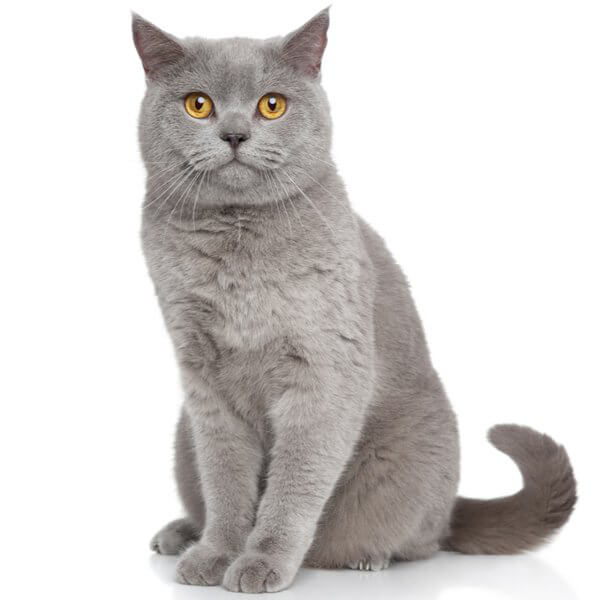

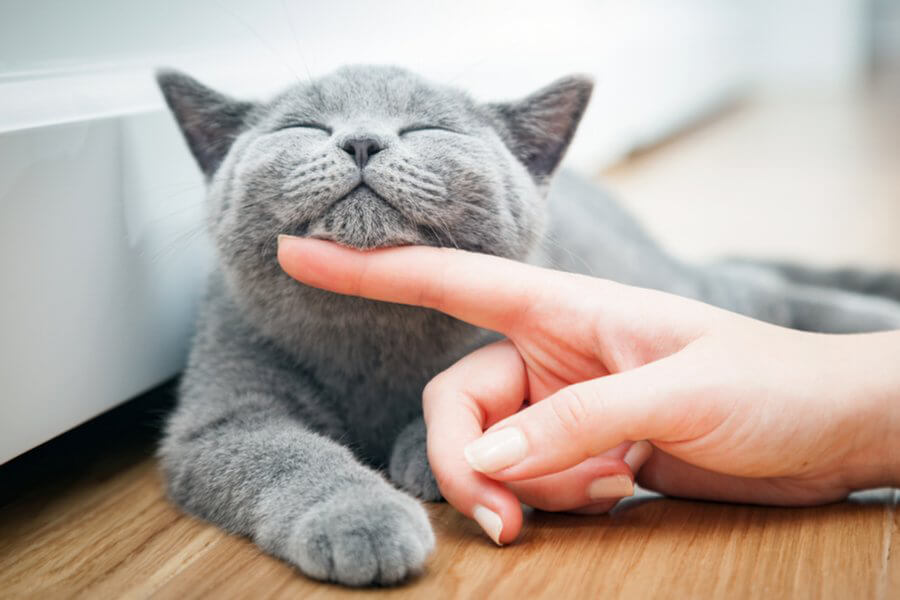


During the Roman invasion, several cats were brought into the United Kingdom to aid in the control of pests. Over time, these cats mated with native wild cats and produced a native domestic breed. However, it wasn’t until 1870, that the modern British Shorthair we know and love today, was accepted as a breed
Unfortunately, the number of these cats dropped dramatically during World War I and World War II. Numbers dropped so low after the Second World War that the cat breed was virtually extinct. Fortunately, through the continuous effort and dedication of cat breed enthusiasts, the British Shorthair cat was saved. From this point, other breeds such as Russian Blues, Persians, and Burmese, were added to the British Shorthair mix.
These cats have grown in popularity since then. In 1874, a British Shorthair named Brynbuboo Little Monarch was the first male of this breed to achieve championship status by the GCCF. He went on to become one of the most popular stud cats which means that most British Shorthairs today can trace their lineage back to him.
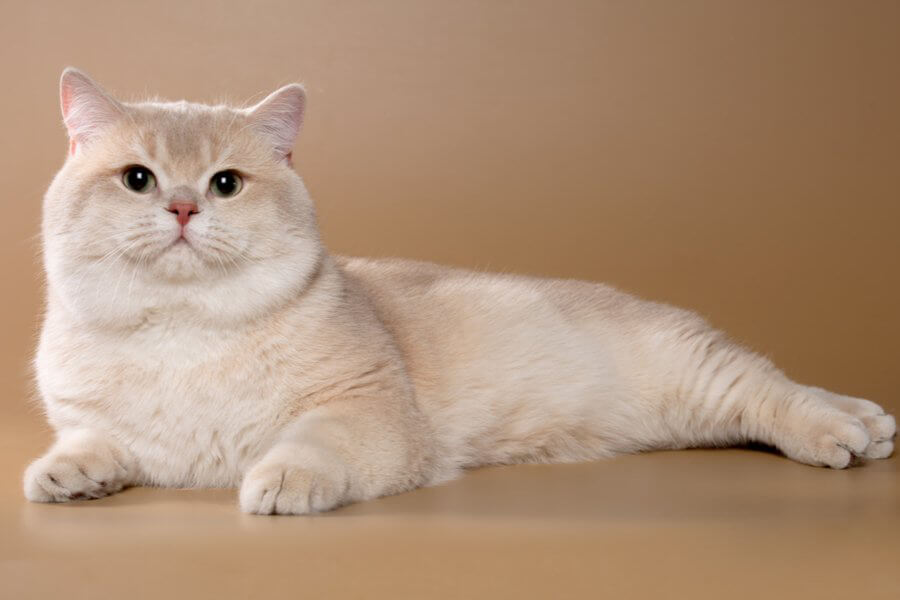
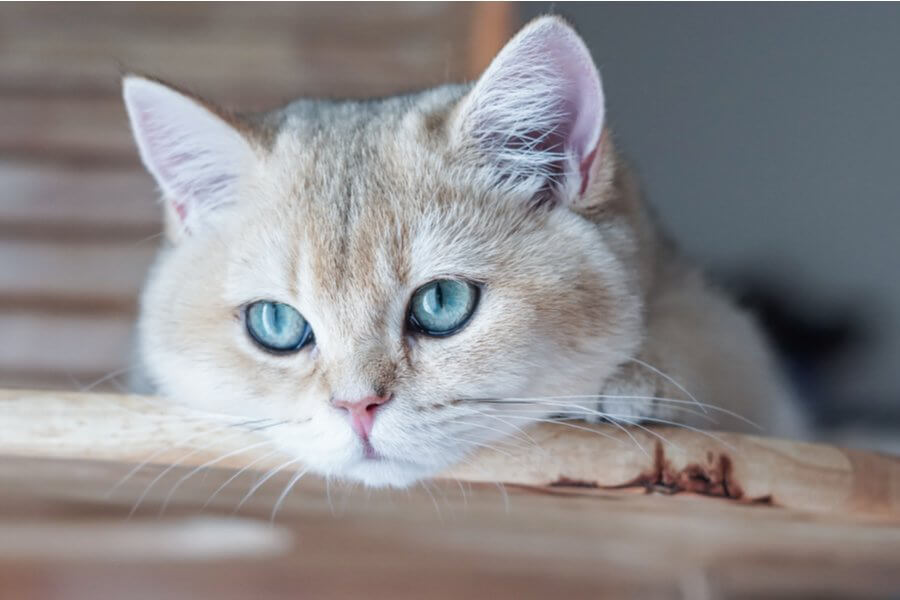
British Shorthairs are well-proportioned cats with kind and sincere expressions. They are famous for having a "teddy bear" look with their large, round, expressive eyes and compact, well-balanced bodies.
British Shorthair cats have round faces and full cheeks. Their noses are short, wide, and straight. They have firm and deep chins, with impeccably level bites.
The ears of British Shorthairs are small, well-rounded at the tip, and are set well apart on the head. The outside of the ear is covered with hair and there is a small amount of furnishing inside. Most British Shorthairs have stunning orange-amber eyes. However, cats with white coats can also have blue eyes. Interestingly, all British Shorthair cats are born with blue eyes. The adult colour usually develops at around seven weeks of age.
British Shorthair cats have strong, stocky bodies and short backs. Their strong legs are relatively short, with round, firm paws and close-fitting toes with five on their front feet, but only four on their back feet. Their tails are broad and relatively long, being thicker at the base and rounded at the tip.
The gorgeous coat of the British Shorthair breed is short, dense, and plush. The "flagship" of this cat breed is the British Blue colour, with nearly half of cat breed registrations being the 'self' colours (one solid colour). The classification of the colours and patterns are as follows:
British Self: These cats are all one solid colour which can range from lilac to black. All British Self cats should have orange or amber eyes.
British Colourpointed: Colourpointed cats resemble the coat pattern of the Siamese breed, with light coloured bodies and contrasting points which include the face, ears, tail, and paws. These cats have striking blue eyes.
British Tabby: These varieties come in a range of colours and are generally accepted in the following patterns; mackerel, spotted, ticked, and classic tabby.
British Tortoiseshell: These cats have a mixture of colours on their coats which can include white.
British Tipped: These cats have coats that are coloured at the tips and their eyes are usually green. The most common colour varieties you will find are Black (silver) Tipped, and Golden (non-silver) Tipped.
British Shorthair cats are well-known for their kind, calm, and affectionate natures. They enjoy being involved in everything that goes on in the house but they are prone to being a little lazy! These cats mature a little later than other breeds, which means they maintain their kitten-like playfulness well into adulthood. They are also recognised as being very calm, easy-going, and laid-back so they usually get on well with everyone, including dogs and other animals.
British Shorthairs are not particularly energetic cats. They can usually be found lounging around the house whenever they can. They are also not known to be particularly chatty but once they form a solid bond with a family, they will remain devoted throughout their lives. They adore discovering the great outdoors but you must be sure that the area is safe and secure before allowing your cat outside. British Shorthair cats adapt well to being indoor pets providing that you give them lots of attention and toys to play with.
British Shorthair cats are approachable and affectionate. They enjoy lots of attention but in an undemanding way. Most of the time, these cats are quiet and have very calm demeanours.
British Shorthair cats are very lenient with children and other dogs but keep in mind that they generally do not like to be carried around like babies. Instead, they prefer to keep their poise and dignity on the ground. Moreover, they like their independence and are content with their own company. For this reason, British Shorthairs are perfect for people who work long hours out of the house.
Because of their laidback natures, British Shorthair cats tend to put on weight very quickly. So, it is important that you keep a close eye on your cats’ waistline and provide plenty of opportunities to exercise. Remember, that these cats are very intelligent so they need ample stimulation to stop them from becoming lazy, couch potatoes.
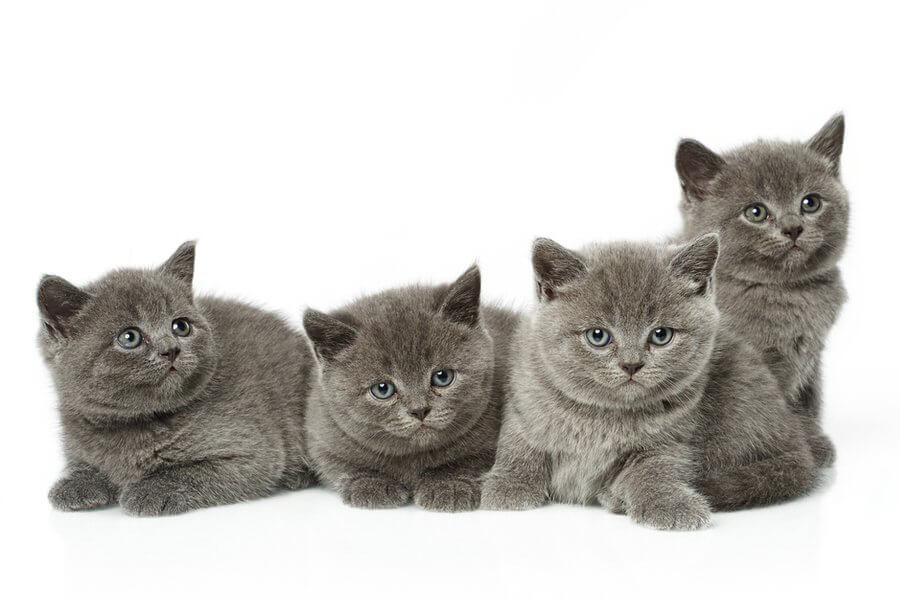
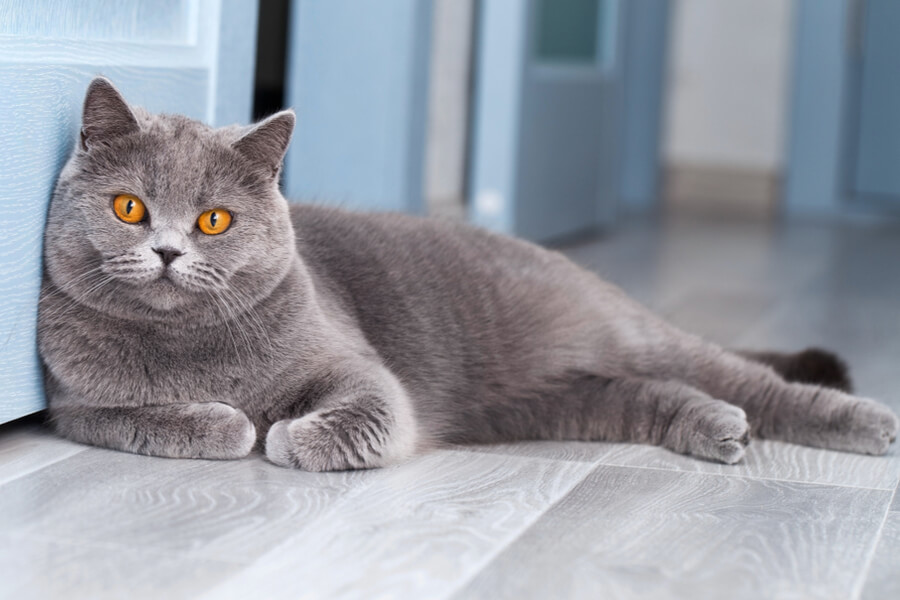
British Shorthair cats may be laidback, relaxed, and easy-going, but they are also very intelligent. So, challenge their intellect and keep them interested by teaching these cats new tricks and regularly offer puzzle toys to keep that waistline in check!
This cat breed is quick to learn new things but they are also lovers of a strict routine! Any changes to this routine can cause these cats to become stressed so it is best to feed them at the same time every day and keep to a routine as much as possible.
British Shorthair cats should be groomed regularly to ensure their luscious coats and skin are kept in good condition. On top of this, cats must be fed high-quality food that meets all of their nutritional needs.
British Shorthair cats have short, close-lying coats which makes them low maintenance when it comes to grooming. Weekly brushing is all it takes to keep their beautiful coats in prime condition. Like other breeds, they will shed more profusely in the Spring and Autumn months. So, you may need to brush your cat more often during these times to keep on top of things.
You should also pay close attention to your British Shorthair cats’ dental hygiene by brushing his teeth weekly. This is important as it prevents gingivitis which is common in cats.
Lastly, you will need to make sure that you clean your British Shorthair cats' ears to avoid the risk of ear mites, as these can lead to painful ear infections.
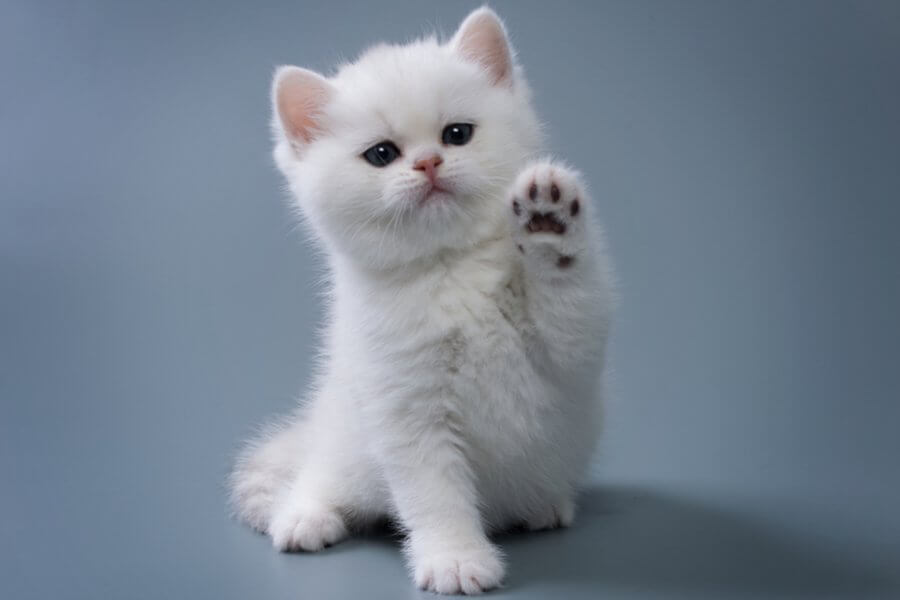
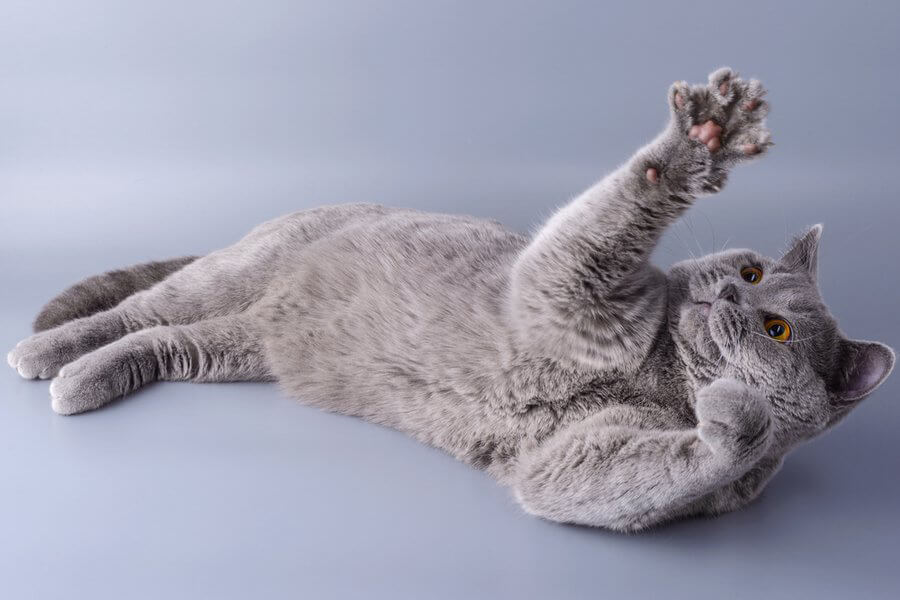
The average life expectancy of British Shorthair cats is 14 to 20 years, as long as they have been correctly cared for and provided with an appropriate, proper high-quality diet.
British Shorthair cats are known to suffer from a few genetic health conditions that you need to be aware of if you are planning on adopting one of these cats. The conditions that seem to affect this cat breed are:
Polycystic Kidney Disease (PKD) – an inherited condition that causes multiple cysts to form in the kidneys. If not treated, it can lead to kidney failure.
Hypertrophic cardiomyopathy (HCM) - the most commonly diagnosed cardiac disease that causes a cat's heart's muscular walls to thicken.
This good-natured cat breed is perfect for families with children and cat-friendly dogs. These cats love the attention they receive from children as long as they are treated with respect and compassion. They are fairly lenient with clumsy toddlers and prefer to move away rather than scratch when play starts to get a little too rough.
Always remember that it is best to supervise all interactions between children and cats to avoid the risk of mishaps and potential injuries.
British Shorthair cats also get on well with dogs, provided that they are properly socialized from an early age. It is best to oversee any interaction between your British Shorthair and other animals to ensure everything goes smoothly.
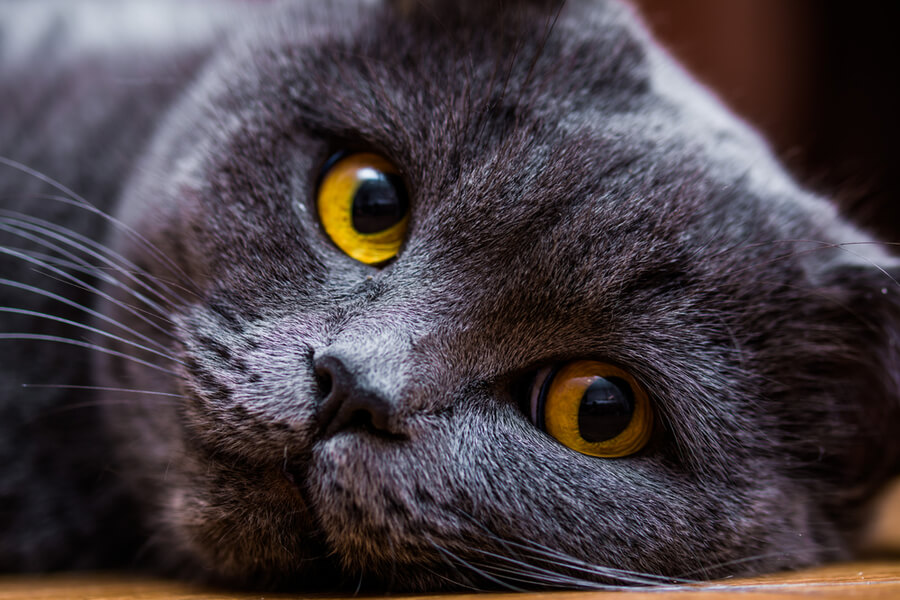

We can connect you with Breeders that are specialized in this particular breed.
See available kittens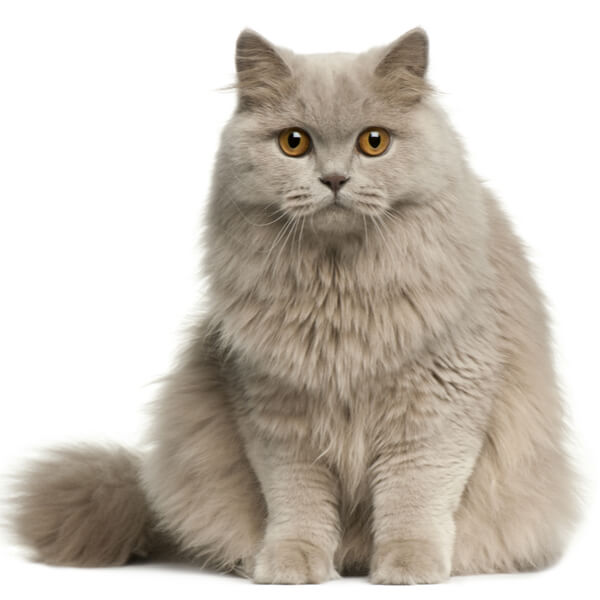
United Kingdom
Size : Medium
Coat : Long
Registration : GCCF, TICA, FIFe
Vocality : Low
Hypoallergenic : No
Grooming : Twice a Week
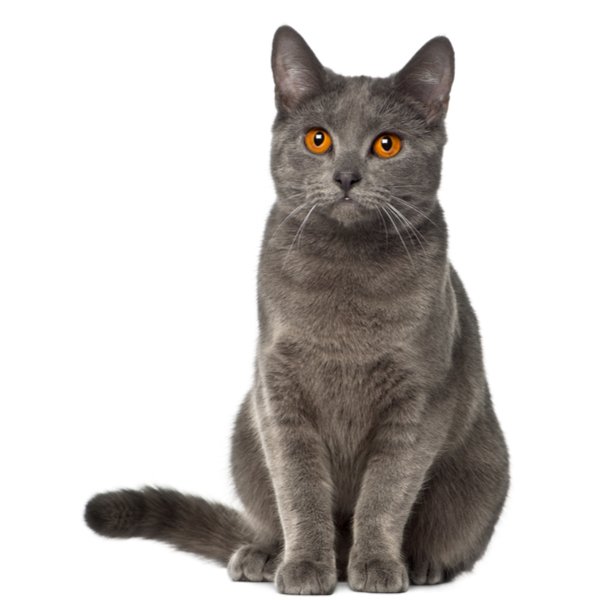
France
Size : Medium
Coat : Short
Registration : GCCF, TICA, CFA, FIFe
Vocality : Low
Hypoallergenic : No
Grooming : Once a Week
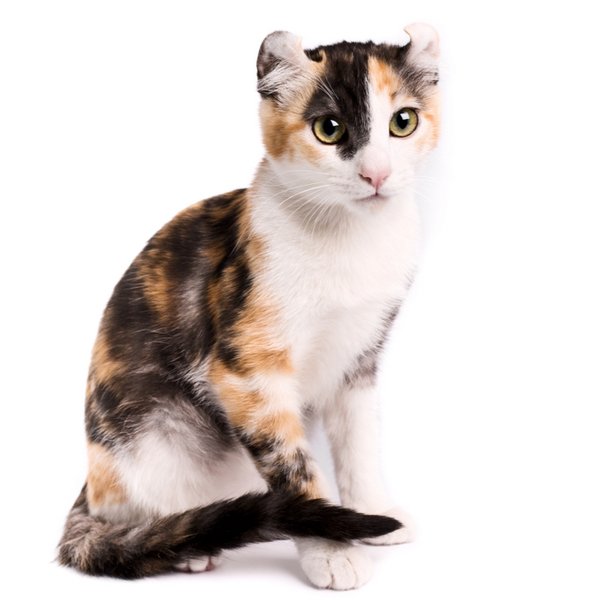
United States of America
Size : Medium
Coat : Short
Registration : TICA, CFA, FIFe
Vocality : Low
Hypoallergenic : No
Grooming : Once a Week
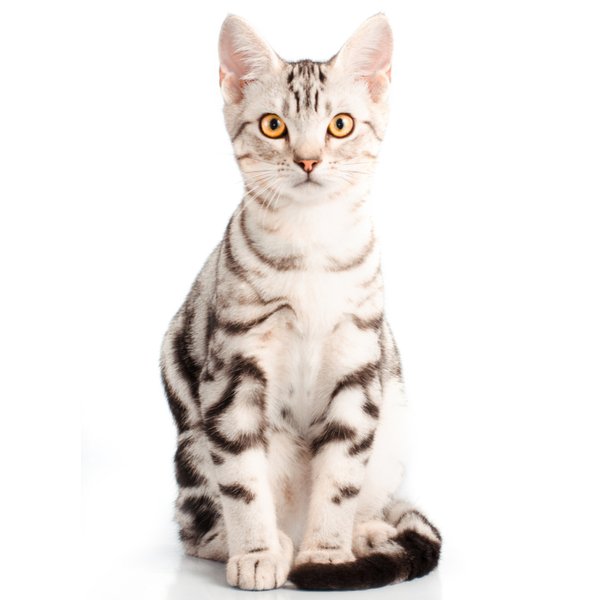
United States of America
Size : Medium
Coat : Short
Registration : TICA, CFA
Vocality : Low
Hypoallergenic : No
Grooming : Once a Week


Need some advice?
Whether you're a first time pet owner, an experienced pet owner, a new or long-time breeder, or just curious about pets, we've got you covered!

January 17, 2024
What Is The Personality Of Russian Blue Cats?
Russian Blue cats are most known for their distinctive shimmery blue-silver coat and piercing green eyes. However, this breed’s calm and gentle temperament is what makes them shine the most in the feline world.

January 17, 2024
10 Facts About Russian Blue Cat Breed
Russian Blues are one of the most aesthetically stunning cat breeds, with a gorgeous plush silvery coat and vibrant green eyes. However, it’s not only their appearance that is beautiful; their nature is too.

January 17, 2024
How To Choose The Right Cat Breed for You
Cats can make the most fantastic animal companions; they are adorable, friendly, and loving. However, not all felines are created equal. There are many different breeds, of which each has its unique personality traits.
Need some help?
Contact us to speak to our friendly advisor, who will gladly help you find your dream pet!



We are registered in England and Wales under registration number 12568840,
and our registered office is at 58-60 Kensington Church Street, W8 4DB London, England.
© 2023 The Pedigree Paws